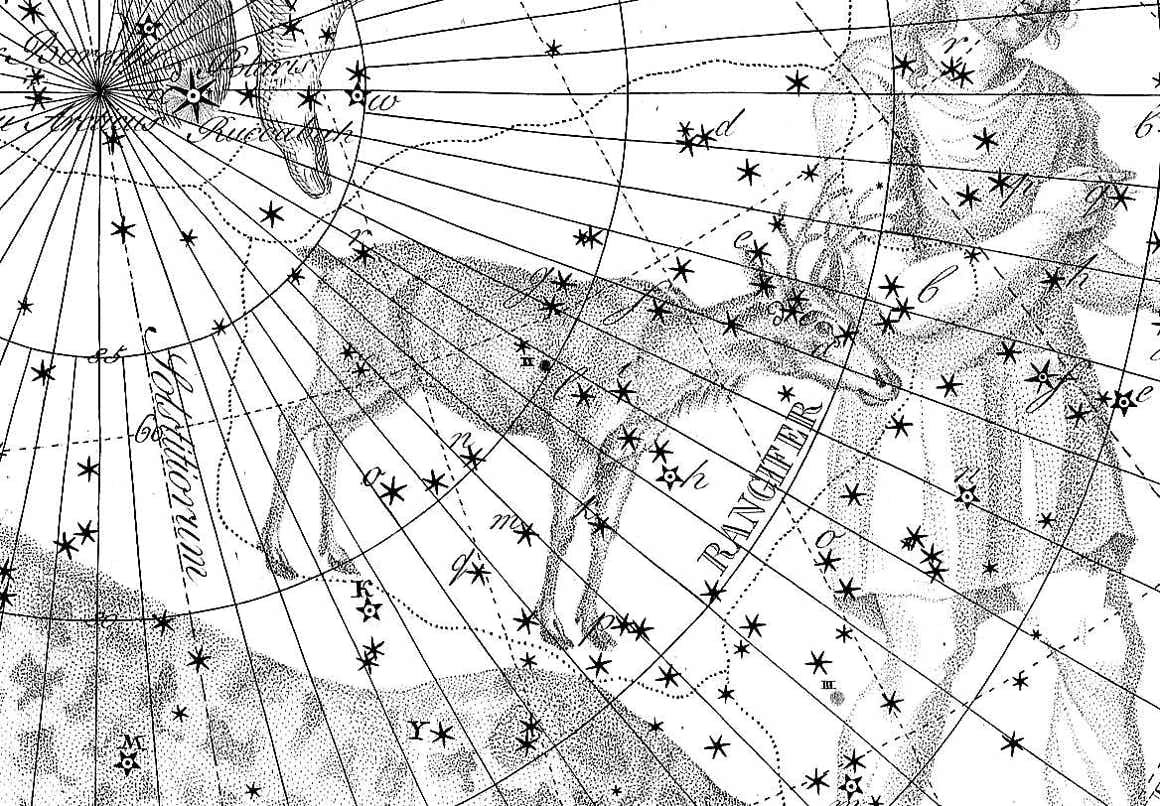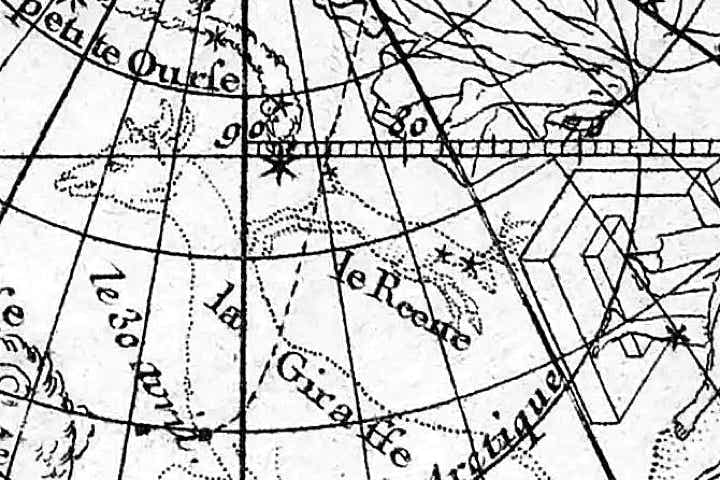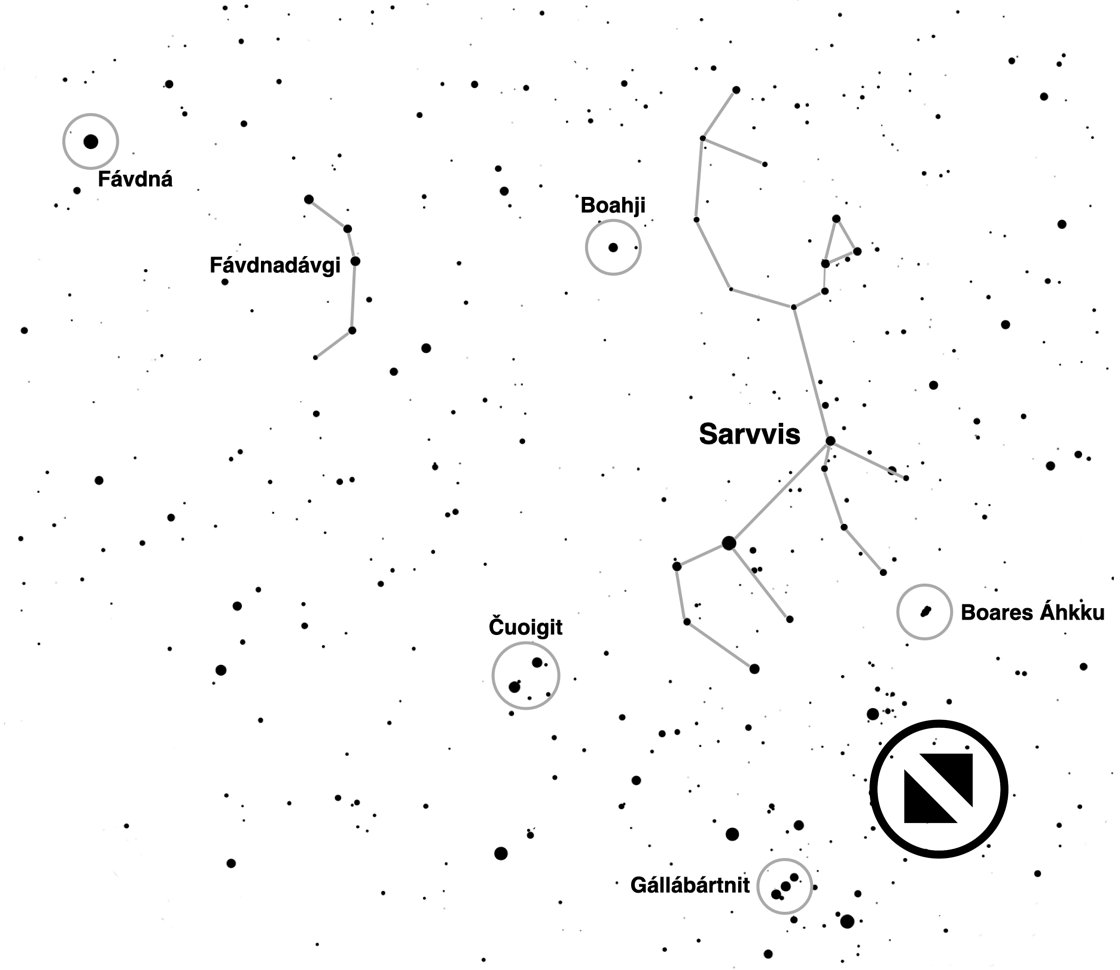
A faint, far-northern constellation introduced in 1743 on a star chart published by the Frenchman Pierre-Charles Le Monnier (1715–99) in his book La Théorie des Comètes. The chart showed the track of the comet of 1742 through the north polar region of the sky and Le Monnier was inspired to place a new constellation representing a reindeer on the comet’s course, close to the north celestial pole between Cepheus and Camelopardalis. Le Monnier chose a reindeer as a reminder of his trip to Lapland in 1736–37 with the expedition of Pierre Louis de Maupertuis to measure the length of a degree of latitude in the far north. (The Sami people of northern Scandinavia also visualized a reindeer called Sarvvis, or Sarva, among the stars, but theirs was much bigger, incorporating Auriga, Perseus, Cassiopeia, and Cepheus.)
The same chart was republished in 1746 in Le Monnier’s book Institutions astronomiques but with no further explanation of the new constellation that appeared on it. Le Monnier seems never to have published a list of its stars, but Bode in his catalogue Allgemeine Beschreibung und Nachweisung der Gestirne of 1801 assigned it 46 stars of 5th to 7th magnitude plus one deep-sky object, the galaxy NGC 1184. Most of these are now within the borders of northern Cepheus.
On Le Monnier’s chart the constellation was named ‘le Réene’, a spelling that was adopted by his fellow Frenchman Jean Fortin in his Atlas Céleste of 1776 (with the addition of an accent over the first letter e: Réene). However, the name should more accurately have been ‘le Renne’, and Fortin changed it on his revised edition of 1795. Bode Latinized it as Rangifer on his Uranographia of 1801. An alternative name found on some maps was Tarandus from the reindeer’s scientific name, Rangifer tarandus.
Rangifer seen on Chart III of the Uranographia of Johann Bode (1801). Its feet stand almost on the back of Camelopardalis at bottom left, while its head and antlers brush the right arm of Custos Messium, another now-obsolete constellation. The reindeer’s tail points towards the north celestial pole, at upper left.
© Ian Ridpath. All rights reserved
The reindeer made its first appearance in 1743 under the name le Reene on this chart in Pierre-Charles Le Monnier’s book La Théorie des Comètes. The star just behind the reindeer’s hind quarters is Polaris, while the dashed line crossing its hind legs is the path of the bright comet of 1742 (now known as C/1742 C1).
In the mythology of the Sami people of northern Scandinavia, Sarvvis was a giant reindeer being pursued by hunters. Sarvvis (also called Sarva) was composed of the constellations we know as Auriga, Perseus, Cassiopeia, and Cepheus. Auriga formed the reindeer’s hind quarters, Perseus its front legs and neck, and Cassiopeia and Cepheus its head and antlers. According to the myth, a hunter called Fávdná (the star Arcturus) follows the reindeer across the sky each night. His bow, Fávdnadávgi, is composed of the handle of the Plough plus Chi Ursae Majoris. Between Fávdná and the reindeer lies Boahji, the pole star. Other hunters in this scene are three brothers called Gállábártnit (Orion’s belt), and two skiers called Čuoigit (Castor and Pollux). Boares Áhkku (the Pleiades) is an old woman with a pack of dogs. Fávdná must not accidentally hit Boahji, the pole star, or the sky will fall and it will be the end of the world. Hence every night the hunt ends without resolution, and resumes again the following night.





